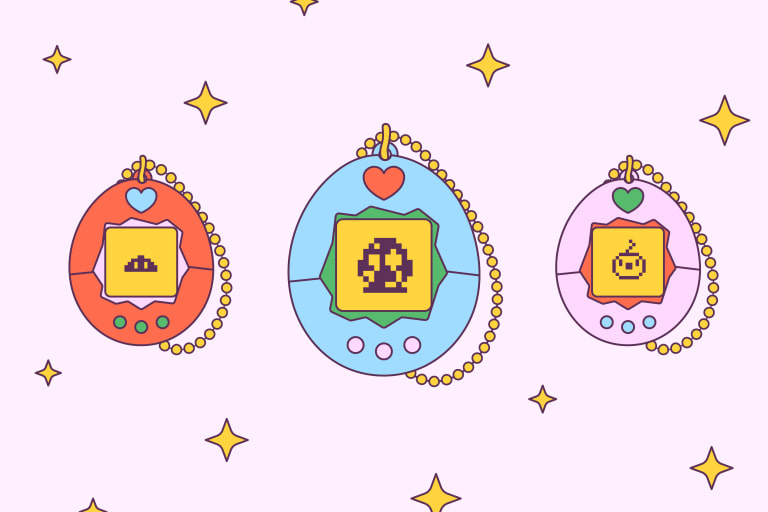
Your 7-Week-Old Baby
This is a good week for baby “talk,” improving your breast pump and feeling like yourself again.


In This Article
If you thought the smiling last week was exciting, there’s even more coming this week: cooing. Now’s the time to really start engaging with your baby, and we’ve got tips from Dr. Chris Klunk, a board-certified neonatologist at Pediatrix Medical Group, on how to talk to them in a way that encourages their early speech skills (without making you feel too silly).
As for you, you’re out of the weeds of recovery—at least mostly—but you may be wondering when you’ll start feeling like your old self again. Dr. Faith Ohuoba, ob-gyn, and Victoria Murray, a perinatal mental health expert, have some ideas to help you through this identity transition.
This is also a good time to check on your breast pump to make sure you’re getting the most out of it, especially if you’re building a freezer stash or prepping to return to work. We’ve got expert tips from Krystal Duhaney, IBCLC, on how to pump more efficiently and when to replace your pump parts (it might be more often than you think!).
🚼 Baby’s Development
🗣️ Baby’s Communication
Baby’s first words are still a long way off, but this week, you might start hearing the earliest versions of your baby “talking.” Tiny cooing noises, happy gurgles and lots of experimenting with vowel sounds is their way of mimicking you as they hear you talk.
These coos are more than just cute; they’re an important part of baby’s language development and social bonding.
You might also notice more consistent eye contact, more of those little smiles or even attempts to make a wider range of facial expressions.
💡 Try This with Baby: Talking to Your Baby
We’ll readily admit that it might feel weird or silly at first, but one of the best things you can do to encourage your baby’s early speech development is to talk to them out loud. "Your baby learns to communicate from watching and listening to everyone around them," Dr. Klunk says. "Their brains are little sponges at this age, and every interaction has an effect. They are learning about expression, tone, how to convey emotion and they are building bonds and relationships."
But what do you even talk to a seven-week-old about? Honestly, anything. Dr. Klunk suggests just talking out loud about what you're doing. Narrate your day out loud—even something simple like explaining the steps of baby’s diaper change, describing their toys or reading your text messages out loud.
"Make it a positive experience for everyone involved," he says. "Sing, crack jokes. Talking to your baby, or any baby for that matter, doesn’t have to be awkward. It really doesn’t have to be all different from any other talking. No need to 'goo goo ga ga'—just talk."
It may not seem like much right now, and it may feel more like you’re just talking to yourself more often than not, but these little exchanges are baby’s first conversations, and they matter more than you think. You’re helping your baby learn to communicate and socialize, and it can really help with bonding too.
💗 You, 7 Weeks After Baby
🧑⚕️ Your Physical Health
Now that you’ve had your six-week postpartum checkup, you might be wondering if you’re officially recovered. The answer is a little complicated, and it can vary from person to person.
Regardless of whether you gave birth vaginally or via C-section, any vaginal bleeding and discharge has likely tapered off completely by now. If not, let your doctor know, since it could be a sign of infection or hormonal imbalance.
Once postpartum bleeding has ended, you might notice some light spotting in the weeks to follow. That’s the return of your menstrual cycle, says ob-gyn Dr. Faith Ohuoba, and means you could get pregnant again.
If your doctor has okayed you for sexual activity, there are a couple things to keep in mind. Penetrative sex may be uncomfortable at first, especially if you're breastfeeding, which can cause vaginal dryness as a side effect (thanks, hormones). And like we mentioned last week, it can be dangerous to your physical health to get pregnant again so soon after giving birth, so doctors usually recommend starting birth control around this time.
When it comes to getting on birth control postpartum, be sure to have a thorough conversation with your doctor about it, since there may be certain considerations depending on if you’re breastfeeding or have complications like high blood pressure or hormonal imbalances.
(Speaking of which, you may have heard that breastfeeding can help prevent you from getting pregnant again. While exclusively breastfeeding can delay your period coming back, it’s not a 100% guaranteed method of birth control, so be sure to talk to your doctor about other contraceptive options.)
If you had a C-section, your incision may still be healing, and you might still have limitations on heavy lifting, bending and wearing anything that puts pressure on your lower abdomen. Dr. Faith says you should have at least two visits with your ob-gyn in the first six weeks to make sure your incision is recovering properly, and by now your incision should have no drainage, no redness and no pain—though some mild tenderness is normal.
Other points of recovery include your pelvic floor muscles and abdominal muscles, which we touched on a couple weeks ago—those can take longer to fully heal, so try to be patient with your body. It’s been through a lot.
🧠 Your Mental Health
You’re seven weeks in, and that’s no small feat, but you might also be wondering if you’ll ever feel like yourself again. It’s totally normal to want a bit of your old self, your old life, back, especially if this is your first baby. It’s a major identity shift, Dr. Faith says. “I believe it is okay to grieve your ‘pre-baby’ self. It’s a shift from being completely independent to parenting, and having someone completely dependent on you,” she says.
You might be feeling a little more like yourself than you were in the earliest days of the newborn trenches, or at least in bits and pieces—when you get out for a solo walk, make plans with a friend or even just take a shower uninterrupted. Those moments are important to snag when you can, just to keep yourself grounded.
And at the same time, you won’t get your old life back exactly the way it was, and it’s okay if you have feelings about that. It’s okay to miss the version of yourself that existed before baby—the spontaneous nights out, the undivided attention to your own needs, the person who had more time, energy and quiet.
It isn’t a sign that something’s wrong with you; it’s part of becoming someone new with touches of your old self still intact (a process that, for new moms, has been coined “matrescence”). “In some ways, after becoming a parent you never go back to the old 'you,’” says Victoria Murray, a licensed clinical social worker who specializes in perinatal mental health. “Instead, you gradually integrate your new experience and values as a parent with who you were before.”
That can look different for everyone. “Some people start to feel more like themselves after they’re able to reconnect to their bodies through exercise,” Murray says. “For some, it’s when they're able to start making time for friends or personal hobbies, and for some returning to work may help.”
Dr. Faith and Murray both give the reminder that it takes patience to feel like a whole person again, especially when you’re still within those first three months with a new baby. Dr. Faith recommends getting as much sleep as you can for the sake of your mental health, and Murray encourages you to take a little time for yourself every day to do what you love—sans baby.
🧑🍼 Feeding Baby
🍼 Week 7 Feeding Guidelines
Breastfed babies: Feed on demand, usually around 6–10 feedings per day.
Formula-fed babies: 3–4 fluid ounces per bottle every 3–4 hours, aiming for about 32 fluid ounces of formula per day.
🌟 Getting the Most Out of Your Breast Pump
If you’ve been using your breast pump regularly—anywhere from a few times a week to eight times a day—week seven is a good time to check up on how well your pump is working.
When it comes to making sure your breast pump is as efficient as possible, the biggest things to keep in mind are flange size and whether your parts and accessories need to be replaced, says Krystal Duhaney, an International Board Certified Lactation Consultant (IBCLC), registered nurse and founder of Milky Mama.
“One of the biggest issues I see with pumping parents is that they’re using the wrong flange size—usually too large,” Duhaney says. “Your pump can’t effectively remove milk if you’re not using a properly sized flange.” An ill-fitting flange can also cause nipple soreness, so if pumping is uncomfortable or your output seems low, this is the first thing to check.
As far as checking on your other parts, before you start a session, Duhaney says to make sure all connections (tubes, adapters, flanges, membranes, etc.) are tight. And once you turn the pump on, “use the highest suction that feels comfortable,” she says, but “not necessarily the highest setting your pump offers.”
And keep in mind that those parts don’t last forever. Here’s when Duhaney suggests things be replaced:
Valves, membranes and duckbills: Every two to four weeks with frequent pumping, or every two to three months for occasional pumpers.
Backflow protectors and diaphragms: Every one to three months to prevent milk from flowing back into the pump motor.
Tubing: Every six months is standard, but replace right away if you notice cracks, leaks or any signs of mold inside.
Flanges and breast shields: Every six months, or sooner if you see cracking or tears where they contact your skin.
😴 Sleep
🛏️ Total Sleep: 14–18 Hours
At seven weeks, your baby’s sleep might start to feel a bit more predictable, and by next week you might be preparing to introduce structured naps. Nighttime sleep is gradually consolidating, and some babies may even give you a four-to-five hour stretch overnight (finally!).
❓ Weekly How-To: Treat Diaper Rash
Last week, we talked about how to know if your baby needs to move up a diaper size. With the typical leaks and blowouts that outgrowing a diaper size can sometimes come with, you might’ve noticed some diaper rash, too.
Diaper rash is super common, and even though sometimes it can look a little concerning—pink or red inflamed skin, blotchy, sometimes even bumpy or scaly patches—most cases are mild and can be treated at home in just a day or two. Don't just leave it and hope it'll go away; "even the benign [cases] can be really uncomfortable and benefit from topical treatments," Dr. Klunk says.
If you notice redness on the skin around your baby’s diaper area, including thighs, be sure to check for these potential causes:
Leaving wet or dirty diapers on for too long
Diapers, wipes, soaps, detergents and lotions with certain ingredients like fragrances, essential oils and parabens, which can be irritating to sensitive skin
Diapers or clothes that are too tight and cause chafing
Dietary changes, especially foods that are more acidic, which can baby’s pH balance
Thrush, especially if baby or a breastfeeding parent has taken antibiotics lately
The easiest ways to treat diaper rash, especially if it’s only a mild case, are to apply a thick layer of zinc-based diaper cream to the affected area at every diaper change to keep baby’s skin protected, and change baby’s diaper more often. It can also help to avoid wipes with alcohol or fragrances, and instead opt for water-based ones or a damp soft cloth.
When to call the doctor: "Anything more than red, irritated skin that doesn’t start to improve after a couple days of good diaper hygiene and a barrier cream is worth having your pediatrician take a peek at," Dr. Klunk says. If the rash seems especially painful or includes open sores, it could be a sign of infection. In either case, give your pediatrician a call—they might recommend an antifungal cream to get things cleared up. "Additionally, it’s always helpful to a get a refresher from your doctor on good diaper hygiene," Dr. Klunk adds. "And oftentimes that is all it takes to find the culprit!"
👀 Looking Ahead
2-Month Well Baby Visit: This checkup typically happens around week eight and includes the first round of several vaccinations.
Head Control: Your baby’s neck strength is improving, and if you haven’t noticed it yet, you’ll likely see them hold up their head nice and steady soon.
🛍️ Panic Order

Babylist
Baby Starter Library Book Box
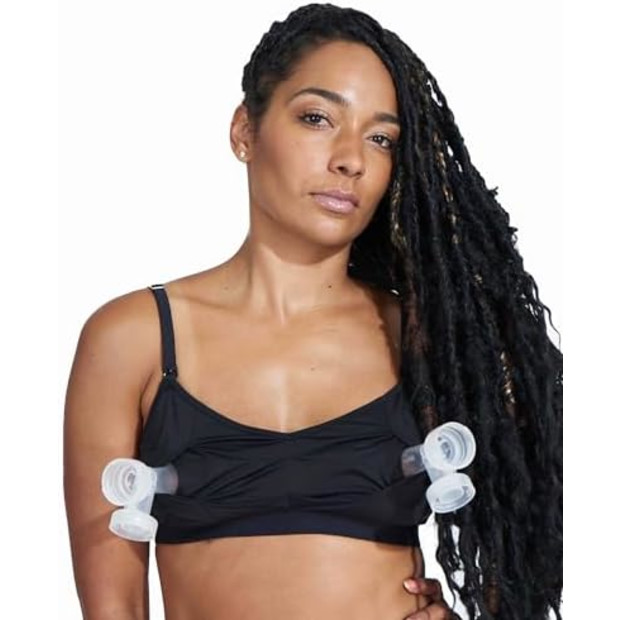
Bodily
The Do Anything Bra: Nursing and Pumping Bra
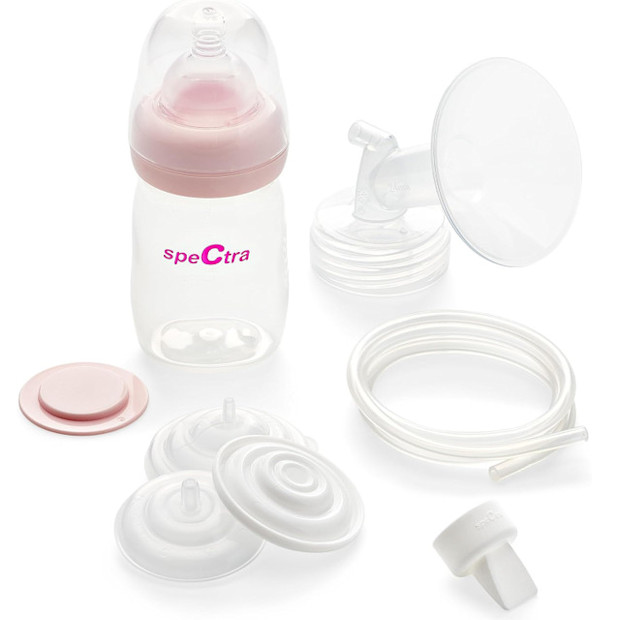
Babylist Health
Insurance-Covered Breast Pump Parts
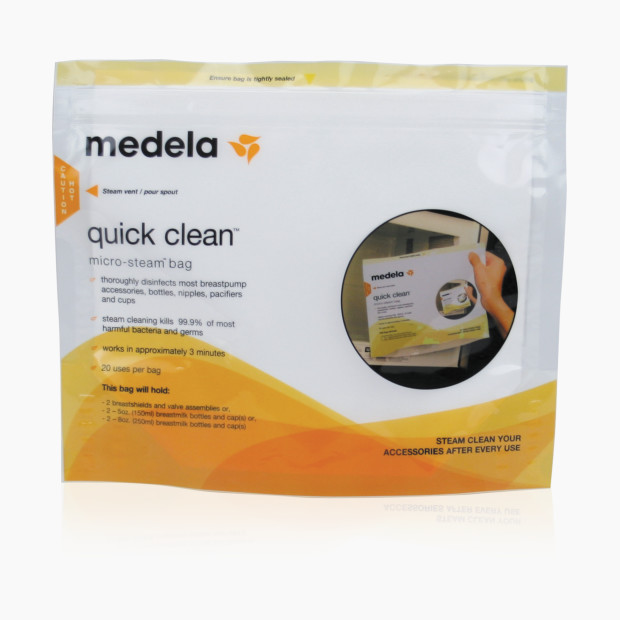
Medela
Quick Clean Micro-Steam Bags
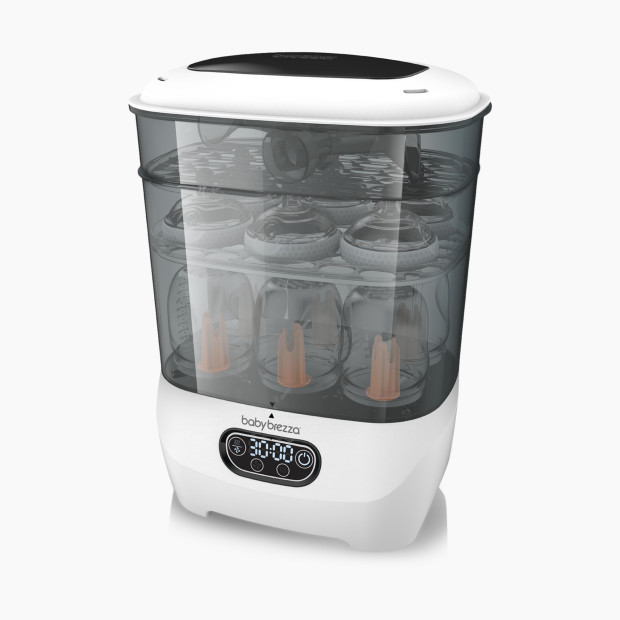
Baby Brezza
One Step Baby Bottle Sterilizer Dryer Advanced

Sprucely
Milk Storage Bags
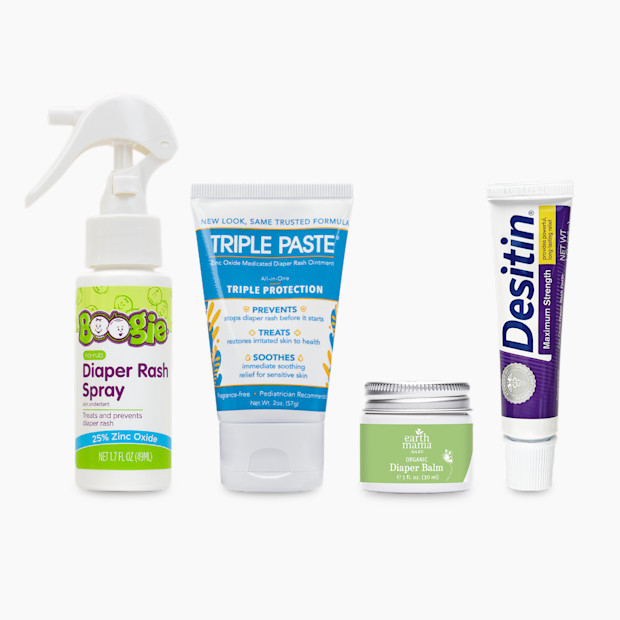
Babylist
Diaper Cream Box
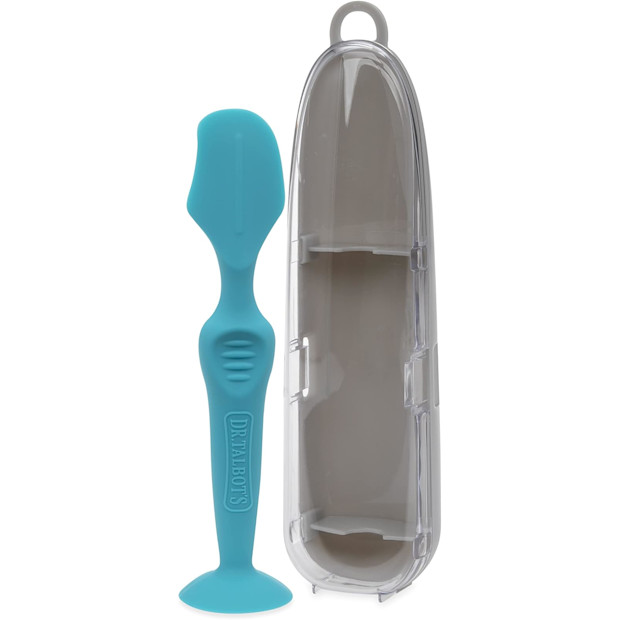
Dr. Talbot's
Diaper Cream Brush for Babies
Expert Sources
Babylist content uses high-quality subject matter experts to provide accurate and reliable information to our users. Sources for this story include:
Dr. Chris Klunk, board-certified neonatologist at Pediatrix Medical Group
Dr. Faith Ohuoba, ob-gyn in Houston, TX
Victoria Murray, LCSW and perinatal mental health counselor.
Krystal Duhaney, IBCLC, registered nurse and founder of Milky Mama